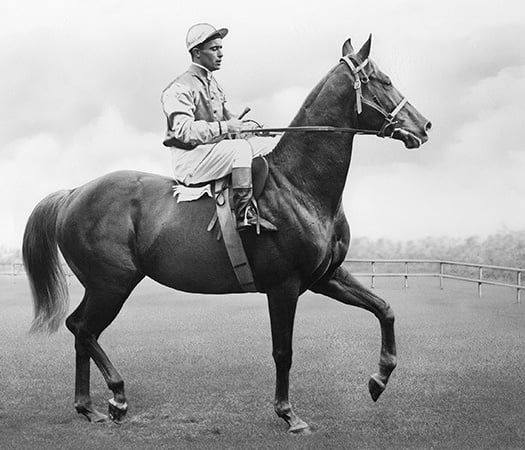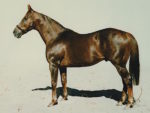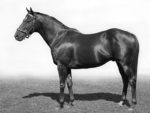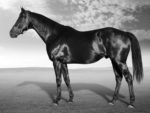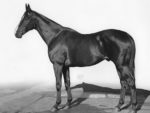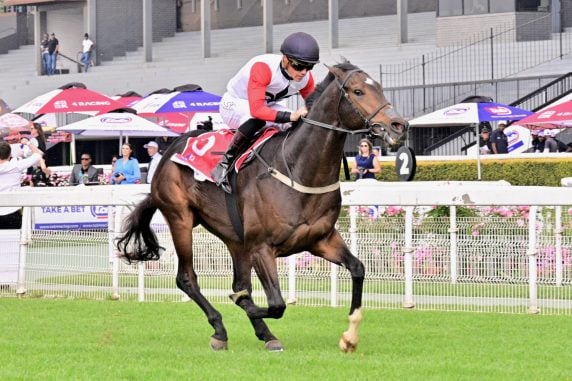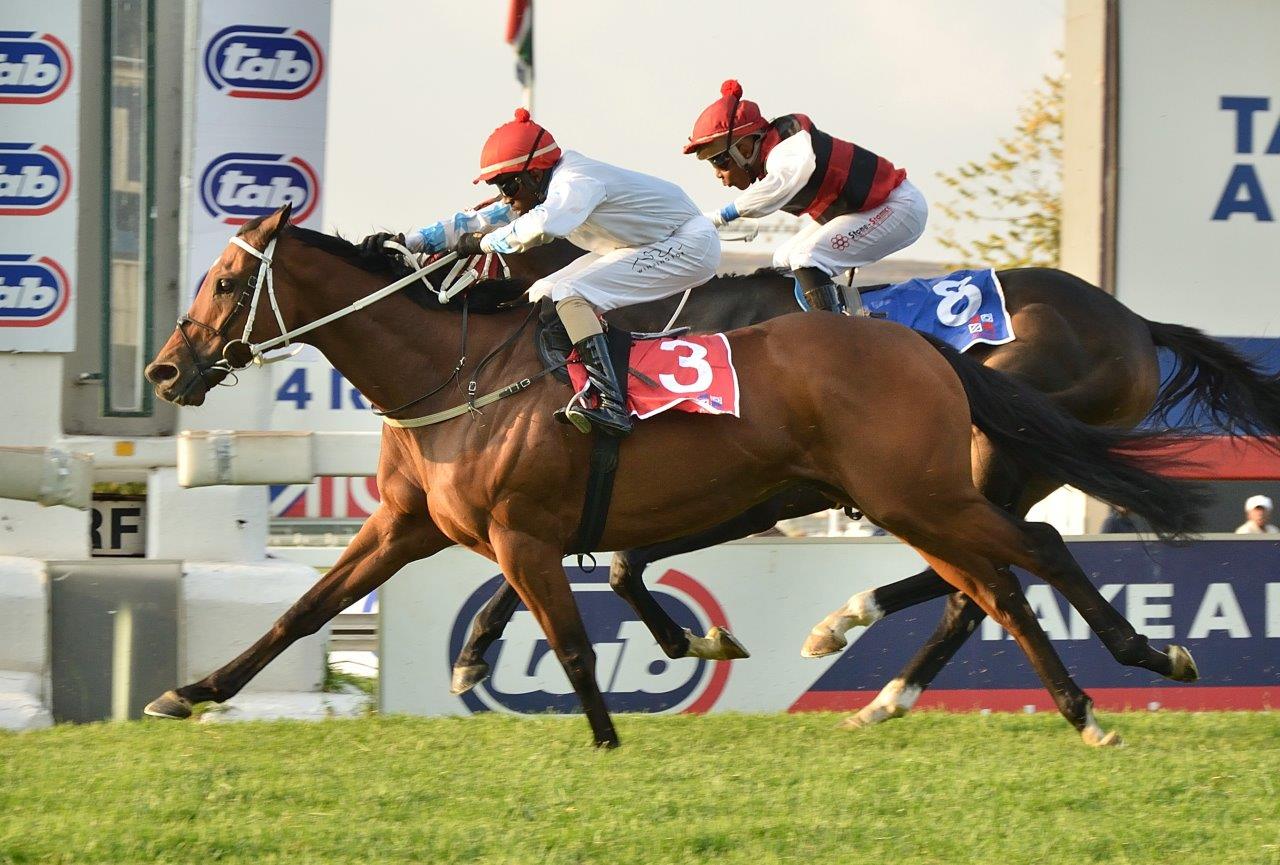There is no doubt the Queen’s Plate has always been a great race. Not only does it have an unbroken history, it has an honour roll second to none and its champions are horses for the ages. However, under the meticulous management of Mrs Gaynor Rupert and the L’Ormarins team, it has acquired a unique flavour and mystique all of its own.
In the first place, the race is run at weight for age. This means it is a true and fair test and – usually – produces a true and fair result. It is therefore a race with integrity, a race you can trust. And, with our racing diet – and even Gr1 races – consisting largely of handicaps, it is perhaps one of the reasons that set the race apart from the rest and makes the Queen’s Plate one of our most coveted trophies. It is indeed, a run for glory in the true, old-fashioned sense of the word.
Its long history and particularly its long-standing royal association give it additional cachet and over the years the Queen’s Plate has become a story in itself. For those willing to take the time to unravel it, the Queen’s Plate’s tendrils reach forward and backward in time and even stretch right around the globe. Some of its champions trace back to the great Lord Derby, winners have been bred, trained and ridden by some of the greatest horsemen this country has ever produced and its presence is felt all across our stud book. However, like a Chinese puzzle, every single race is a story in itself and every single winner has a story.
The Importance of Stories
To understand why this is so important, one needs to examine the importance of stories. Stories are what connect us to our humanity. They link us to our past and provide glimpses into the future. As one scribe would have it, “Storytelling is how we make meaning out of the chaos of human existence. It provides a shape, so that our own lives have a beginning, middle, and an end, and we can feel like we’ve meant something, and left our mark on the world.”
With its unparalleled history, the Queen’s Plate is perhaps the most storied of all, which perhaps makes it the most important race of all. It tells our history, it explains our studbook; via its royal connection and the horses and people it is associated with, it connects us to the world – and the world to us. And the reason this is so important is that it gives us roots. In the same way that good, strong, healthy roots are needed for a tree to thrive, so does any community or society. And as trees are the lungs of the world – breathing in carbon dioxide and producing life-giving oxygen in exchange, so our truly great races breathe in the carbon dioxide of our staple diet of handicaps and breathe out pure, fresh oxygen, providing the integrity and context for the rest of racing to sustain itself and have meaning.
There are many, many great tales, but I picked the prodigious brain of Charles Faull in helping select one of the greatest of them all – a horse that was locally bred, showed extraordinary courage on the track and went on to be a stud book force. After much deliberation, we settled on Royal Affair, who won the race in 1959 and is, according to Charles, “Beyond ANY doubt the fastest 3yo SA has ever seen.”
The Fastest 3yo South Africa Has Ever Seen
Royal Affair was a chestnut horse by Royal Pardon out of a Tenon mare named Zorina. He had a narrow blaze, a tiny bracelet of white on his off hind and a distinctive white ‘Bend Or’ spot on his right flank. George Faull described him as follows, “Although he isn’t a pretty horse, Royal Affair has great presence and plenty of quality. A powerful-quartered, well-girthed individual he was always badly handicapped by his weak fore-legs which had all the typical Fair Trial faults. He turned out badly and was long in the pastern. He was a really great animal. A lesser individual would never have won on those legs.”
According to Leslie Cawcutt, his uncle Wilfy Cawcutt bought Royal Affair in partnership with Dodie Silbowitz, a bookmaking turf accountant and big punter, directly off the farm from Jimmy Hill. “They paid £1000 for him. It wasn’t long after we had put him into work that my uncle needed cash to pay a deposit on a house he was buying, so he offered his half-share to a leading Cape trainer for £500. The trainer came to examine the colt, but turned down the offer after finding what he considered to be ten major faults with the colt. Dodie Silbowitz decided to take over my uncle’s half-share.”
Big race rider Johnny Cawcutt, widely regarded as one of the greatest jockeys ever to grace a saddle in this country, stated firmly, “Royal Affair was not only the fastest horse I ever rode, but, in my opinion, the fastest I have ever seen. I rode him to victory in his first 7 races and only extended him on one occasion. That was in the Cape of Good Hope Nursery when he raced with very sore shins. He won 5 of the other 6 in a common canter.”
The horse was fired and blistered after the Nursery and it was seven months before he could race again. The following season, Royal Affair won by 7 lengths in B Division company, an extraordinary achievement for an early 3yo. Johnny Cawcutt remembers that the horse ‘Walked it.’ Based on this performance, they ran him in the 1958 Diadem Stakes run, in those days, at WFA terms. Cawcutt recalled, “We started with tapes in those days and I was left standing after Bertie Sage on Time To Shine had cut us off at the jump. We lost at least 4 lengths, and yet I was 8 lengths clear after only 200 metres. I never let him go and still won by 7 lengths from Black Pirate.”
The late Allan Robertson once said he had seen two phenomenal racecourse performances in his lifetime – Ribot winning the Prix de l’Arc de Triomphe and Royal Affair winning the Diadem Stakes. To frank the form, it is worth mentioning that Black Pirate went on to win the next two runnings of the Diadem.
Queen’s Plate Glory
Based on his Diadem performance, the decision was made to aim him for the Queen’s Plate. Johnny continued, “I rode the colt in his 7 furlong trial gallop before the Queen’s Plate. He finished with such strength and power that we knew he would get the mile easily.” According to the SA Racehorse, the 1959 Queen’s Plate field “was comprised of the best horses in the Cape as well as two distinguished visitors in Gainhall and Gipsy Hill, fresh from their running one two in the Natal Derby, comments were many that this and not the Metropolitan Handicap was the race of the season.” Prophetic words indeed, but perhaps not for the expected reasons.
The SA Racehorse reports, “From barrier rise the pace was on and Royal Affair (8 st. 1 lb.), Time to Shine (8 st. 1 lb.), Worthiness (9 st. 3 lb.), and Avon (8 st. 1 lb.), drew to the front in line abreast followed by Gainhall, Black Pirate, Battle Song, Gipsy Hill (improving after being the last to leave the gate) and Council Rock. Round the turn Royal Affair was hanging out badly and went over on to Time to Shine who was forced on to Worthiness. Once fairly in the straight it was obvious that the issue was going to be between the favourite and Time to Shine. They were asked for their efforts simultaneously and Royal Affair immediately accelerated in the manner of a very good horse and drew clear.” Johnny Cawcutt reported that as they came to take the lead, he felt the horse go wrong just after the 200m marker. “He stumbled when his leg gave way, but fought on with the courage of a lion.” Royal Affair finished the race on three legs and in what must have been extraordinary pain, but still mustered sufficient courage to win by 2 lengths.
International Aspirations
The horse continued to have sesamoid trouble after that, but was deemed sufficiently good for Silbowitz to send him to the USA, where he was placed in the care of the great John Nerud (who trained Dr Fager). Unfortunately he broke down badly again and was sent home, this time going to a young ‘Big Al’ Alan Higgins.
Alan said, “He was great. The best horse I’ve ever worked with.” Despite never being fully sound, Royal Affair won 2 for Alan as well as just being touched off by greats such as Jerez and Inverthorn in top division handicaps.”
Next, on the recommendation of Gail Thompson, the horse was bought by father and son team, Donald and Peter Wright, from Beaufort West. Peter Wright remembers, “My father and I bought Royal Affair from Dodie Silbowitz in March 1962 for R3500.” The horse was sent to Gail Thompson with the instructions, “one run only; 5 furlongs; ante-post betting; Johnny Cawcutt up; win!”
Thompson, who trained on the beach in Muizenberg and was adept at nursing unsound horses, kept him light before building him up in the last few weeks before the race. He was cantered on the Kenilworth grass every week, but never galloped so as not to risk his legs. On the appointed day, he won in brilliant fashion as planned, equalling the course record and winning Donald a lot of money and was promptly retired to stud.
Stud career
To begin with Royal Affair was given very little chance at stud, covering small books for his first 5 seasons. However, the speed and fire he’d shown on the track, had followed him into the breeding shed. Of his first crop of 7 foals, 6 were runners and 5 were winners. Of his second crop of 10, he had 9 runners of which 9 were winners. And so it continued. He produced a lifetime total of 181 live foals, of which 163 were runners and 132 were winners. Statistically he produced 73,3% winners and 15% Stakes Winners, including the likes of Wend, Captain Bell, Aster, Boland Boy, Flower Power, Lancaster, Morn Again, Fenjal, Portsmouth, Amorella, Macheath, Adrift, King’s Rhapsody and The Cruel Sea. Six of his progeny went on to be Gr1 Stakes winners by today’s standards and he produced several sons who went on to take their turn at stud (Flower Power, Lancaster, Captain Bell and Macheath).
(click below to view Royal Affair’s breeding legacy – Flower Power, Lancaster, Captain Bell and Macheath).
The Rarest of a Sovereign Breed
Charles opines, “The roll of honour of the Queen’s Plates is truly a testament to the rarest of a sovereign breed. Royal Affair won the Queen’s Plate on three legs ridden by the greatest hands and heels jockey this country has ever seen in Johnny Cawcutt. He was without a doubt the best sire of sprinters this country has ever produced, yet his greatness as a sprinter and a sire is almost never lauded.” On 7 January, history will be lived and made at Kenilworth racecourse. Every Queen’s Plate tells a story. Don’t miss your chance to find out what this year’s one will be.


